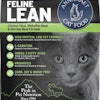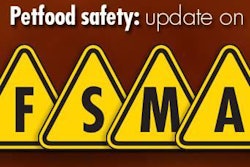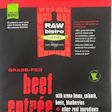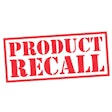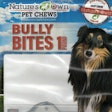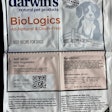Glucosamine hydrochloride and chondroitin sulfate have been ingredients in petfoods for most of the last 20 years. However, neither ingredient ever has been formally approved or otherwise sanctioned for that purpose. This has resulted in inconsistent regulation in the US among states, causing a great deal of difficulty for industry in its attempts to be in nationwide compliance.
In the January 2006 issue of Petfood Industry, I commented on this regulatory morass and suggested that an effort be made to overlook the reported shortcomings in documented utility and safety and to rely on the notable history of apparent safe use of GH and CS so the Association of American Feed Control Officials could define them for use in petfood. Six years later, the regulatory confusion has only gotten worse.
From the US Food and DrugAdministration’s perspective, both GH and CS are unapproved food additives when added to animal feed, which in turn renders a product containing either ingredient subject to enforcement action as an adulterated feed. I am sure FDA has conveyed this opinion a number of times in correspondence to both industry and state feed control officials. However, I am not aware of a case where FDA took direct enforcement action against a petfood based solely on the fact that a product contained either of these ingredients.
Notwithstanding FDA’s viewpoint, most states allow for the inclusion of GH and CS in petfoods provided certain conditions are met — namely, that the label does not bear “drug” claims relating to their inclusion, guarantees are declared and a “not an essential nutrient” disclaimer accompanies the guarantees.
The Office of the Texas State Chemist published Memo #3-17 in 1999 that imposes additional restrictions on species, lifestage and inclusion rates (https://otscweb.tamu.edu/Laws/Policy.aspx). The Ohio Department of Agriculture has codified regulations pertaining to the use of these ingredients as well (https://codes.ohio.gov/oac/901%3A5-7-22).
Although the majority of states may not have formal policies in place, historically, most considered products that were in compliance with Texas’ memo as sufficient. In recent years, though, a few states appear to be deviating from that informal consensus. For example, one has begun requiring the guarantee to be in terms of glucosamine content only instead of GH.
Actually, that is a logical requirement, since in fact glucosamine is the nutrient component of the ingredient GH (in the same way you declare thiamine mononitrate in the ingredient list but guarantee just thiamine). However, the Texas policy sets upper inclusion rates specifically for the complete GH molecule. GH is about 83% glucosamine. So without a guarantee for GH, one would have to further document that the glucosamine guarantee was set so GH as a whole would be compliant with the policy.
At least one other state has recently been asking for maximum GH and CS guarantees instead of minimums. That makes sense if the only purpose of the guarantees is to ensure compliance with the restricted rates of inclusion as stipulated in the Texas memo. However, from a nutritional point of view, a minimum guarantee is much more helpful to the purchaser. Also, the Ohio regulations specify minimum guarantees. So, to be compliant with all states, both minimums and maximums would appear necessary.
Another state had also been requiring a label caution statement regarding use in animals with various health conditions such as bleeding disorders and to administer after feeding to reduce risk of gastrointestinal upset. I think the latter advice might be prudent when given in dosage form, but I’m unclear as to the practicality or need to feed the animal something else before feeding a petfood containing GH and CS. With regard to safety of use under certain health conditions, those are valid concerns when fed at high doses. However, I am not aware of reports of adverse effects when given in amounts as stipulated in the Texas memo.
I understand why states have different policies. From their perspectives, these ingredients are not approved, so compliance with these additional restrictions as a condition of acceptance seems reasonable to them. However, with states having varying requirements, it becomes extremely difficult to produce a label that one can reasonably expect to be acceptable in all states.
Six years ago, I suggested that the long history of use of GH and CS in petfoods without apparent adverse effect at current inclusion rates merited consideration for placement in the AAFCO feed ingredient definitions. That never happened, and in light of FDA’s current concerns regarding procurement of “legal homes” for all ingredients, it is unlikely to ever happen. However, despite the technically unapproved status of these ingredients, if states are to continue to allow for their inclusion in petfoods, there should be an effort to set down conditions so states can act in a consistent manner.
In the mid-2000s, FDA made mention of its intent to publish a guidance document on use of GH and CS in petfoods. However, that topic was unceremoniously and without notice removed from the list of pending guidance documents a couple of years ago.
Regardless, FDA’s position (or lack thereof) should not preclude interested states from meeting (through AAFCO or otherwise) and agreeing to uniform labeling requirements. Otherwise, the only means to ensure consistent state regulation is for states to follow FDA’s view that GH and CS are unapproved food additives and take action accordingly.

